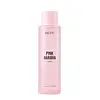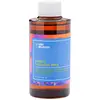What's inside
What's inside
 Key Ingredients
Key Ingredients

 Benefits
Benefits

 Concerns
Concerns

 Ingredients Side-by-side
Ingredients Side-by-side

Citrullus Lanatus Fruit Extract
Skin ConditioningGlycerin
HumectantDipropylene Glycol
HumectantButylene Glycol
Humectant1,2-Hexanediol
Skin ConditioningIsopentyldiol
HumectantNiacinamide
SmoothingWater
Skin ConditioningBetaine
HumectantHydroxyethyl Urea
HumectantSodium Citrate
BufferingPropanediol
SolventAllantoin
Skin ConditioningPolyglyceryl-10 Laurate
Skin ConditioningCitric Acid
BufferingSalicylic Acid
MaskingEthylhexylglycerin
Skin ConditioningAdenosine
Skin ConditioningDisodium EDTA
Glyceryl Acrylate/Acrylic Acid Copolymer
HumectantLavandula Angustifolia Oil
MaskingCyanocobalamin
Skin ConditioningGlutathione
Sodium Ascorbyl Phosphate
AntioxidantTranexamic Acid
AstringentCalamine
AbsorbentMelaleuca Alternifolia Leaf Extract
PerfumingSodium Hyaluronate Crosspolymer
HumectantLactobacillus/Soybean Ferment Extract
Skin ConditioningHydrolyzed Glycosaminoglycans
HumectantDioscorea Japonica Root Extract
Skin ConditioningTremella Fuciformis Extract
HumectantHippophae Rhamnoides Fruit Extract
Skin ConditioningSodium Hyaluronate
HumectantBenzyl Glycol
SolventCentella Asiatica Extract
CleansingHydrolyzed Hyaluronic Acid
HumectantHyaluronic Acid
HumectantRaspberry Ketone
MaskingLinalool
PerfumingCitrullus Lanatus Fruit Extract, Glycerin, Dipropylene Glycol, Butylene Glycol, 1,2-Hexanediol, Isopentyldiol, Niacinamide, Water, Betaine, Hydroxyethyl Urea, Sodium Citrate, Propanediol, Allantoin, Polyglyceryl-10 Laurate, Citric Acid, Salicylic Acid, Ethylhexylglycerin, Adenosine, Disodium EDTA, Glyceryl Acrylate/Acrylic Acid Copolymer, Lavandula Angustifolia Oil, Cyanocobalamin, Glutathione, Sodium Ascorbyl Phosphate, Tranexamic Acid, Calamine, Melaleuca Alternifolia Leaf Extract, Sodium Hyaluronate Crosspolymer, Lactobacillus/Soybean Ferment Extract, Hydrolyzed Glycosaminoglycans, Dioscorea Japonica Root Extract, Tremella Fuciformis Extract, Hippophae Rhamnoides Fruit Extract, Sodium Hyaluronate, Benzyl Glycol, Centella Asiatica Extract, Hydrolyzed Hyaluronic Acid, Hyaluronic Acid, Raspberry Ketone, Linalool
Water
Skin ConditioningDipropylene Glycol
HumectantGlycolic Acid
BufferingPropanediol
SolventSodium Citrate
Buffering1,2-Hexanediol
Skin ConditioningGlycerin
HumectantGalactomyces Ferment Filtrate
HumectantWhey Filtrate
Skin ConditioningButylene Glycol
HumectantSalicylic Acid
MaskingAloe Barbadensis Leaf Extract
EmollientPentylene Glycol
Skin ConditioningNiacinamide
SmoothingTricholoma Matsutake Extract
Skin ConditioningEthylhexylglycerin
Skin ConditioningHydrolyzed Cicer Seed Extract
Skin ProtectingRhododendron Chrysanthum Leaf Extract
MaskingTrisodium Ethylenediamine Disuccinate
Sodium Hyaluronate
HumectantHyaluronic Acid
HumectantHydrolyzed Hyaluronic Acid
HumectantWater, Dipropylene Glycol, Glycolic Acid, Propanediol, Sodium Citrate, 1,2-Hexanediol, Glycerin, Galactomyces Ferment Filtrate, Whey Filtrate, Butylene Glycol, Salicylic Acid, Aloe Barbadensis Leaf Extract, Pentylene Glycol, Niacinamide, Tricholoma Matsutake Extract, Ethylhexylglycerin, Hydrolyzed Cicer Seed Extract, Rhododendron Chrysanthum Leaf Extract, Trisodium Ethylenediamine Disuccinate, Sodium Hyaluronate, Hyaluronic Acid, Hydrolyzed Hyaluronic Acid
 Reviews
Reviews

Ingredients Explained
These ingredients are found in both products.
Ingredients higher up in an ingredient list are typically present in a larger amount.
1,2-Hexanediol is a synthetic liquid and another multi-functional powerhouse.
It is a:
- Humectant, drawing moisture into the skin
- Emollient, helping to soften skin
- Solvent, dispersing and stabilizing formulas
- Preservative booster, enhancing the antimicrobial activity of other preservatives
Butylene Glycol (or BG) is used within cosmetic products for a few different reasons:
Overall, Butylene Glycol is a safe and well-rounded ingredient that works well with other ingredients.
Though this ingredient works well with most skin types, some people with sensitive skin may experience a reaction such as allergic rashes, closed comedones, or itchiness.
Learn more about Butylene GlycolDipropylene Glycol is a synthetically created humectant, stabilizer, and solvent.
This ingredient helps:
Dipropylene glycol is technically an alcohol, but it belongs to the glycol family (often considered part of the ‘good’ alcohols). This means it is hydrating and gentle on skin unlike drying solvent alcohols like denatured alcohol.
As a masking agent, Dipropylene Glycol can be used to cover the smell of other ingredients. However, it does not have a scent.
Studies show Dipropylene Glycol is considered safe to use in skincare.
Learn more about Dipropylene GlycolEthylhexylglycerin (we can't pronounce this either) is commonly used as a preservative and skin softener. It is derived from glyceryl.
You might see Ethylhexylglycerin often paired with other preservatives such as phenoxyethanol. Ethylhexylglycerin has been found to increase the effectiveness of these other preservatives.
Glycerin is already naturally found in your skin. It helps moisturize and protect your skin.
A study from 2016 found glycerin to be more effective as a humectant than AHAs and hyaluronic acid.
As a humectant, it helps the skin stay hydrated by pulling moisture to your skin. The low molecular weight of glycerin allows it to pull moisture into the deeper layers of your skin.
Hydrated skin improves your skin barrier; Your skin barrier helps protect against irritants and bacteria.
Glycerin has also been found to have antimicrobial and antiviral properties. Due to these properties, glycerin is often used in wound and burn treatments.
In cosmetics, glycerin is usually derived from plants such as soybean or palm. However, it can also be sourced from animals, such as tallow or animal fat.
This ingredient is organic, colorless, odorless, and non-toxic.
Glycerin is the name for this ingredient in American English. British English uses Glycerol/Glycerine.
Learn more about GlycerinHyaluronic acid is naturally found in healthy skin. It is a humectant, meaning it draws moisture to your skin.
This ingredient helps hydrate, soothe, and protect the skin.
What makes hyaluronic acid so hydrating? It has the capacity to bind or hold large amounts of water.
Fun fact: It is already naturally found in our bodies, such as the fluids of our eyes and our joints.
Studies find this ingredient to have anti-inflammatory and anti-microbial properties. This can help speed up wound-healing.
Hyaluronic acid can be irritating if the molecule has a low-molecular weight, or if the molecules are small.
One study found low-molecular weight hyaluronic acid to be pro-inflammatory, meaning some people may experience irritation. This is because our bodies use hyaluronic acid in the wound-healing process to signal to our bodies, via irritation, that something needs healing.
The same study found high-molecular weight hyaluronic acid to be anti-inflammatory.
These are some other common types of Hyaluronic Acid:
Learn more about Hyaluronic AcidHydrolyzed Hyaluronic Acid is a form of hyaluronic acid. It is created by the hydrolysis of hyaluronic acid with a high molecular weight. Once created, Hydrolyzed Hyaluronic Acid has a low molecular weight.
Low molecular weight HA has been shown to hydrate and increase elasticity of the skin. Increasing elasticity is also associated with reduction of wrinkle depth.
One study found topical low molecular weight hyaluronic acid may be considered for the treatment of rosacea in the adult population. However, we always recommend speaking with a professional about your skin concerns.
Hyaluronic acids are a humectant. This means they draw moisture from the air. Hyaluronic acids help moisturize, soothe, and protect the skin.
Read more about other common forms of hyaluronic acid:
Learn more about Hydrolyzed Hyaluronic AcidNiacinamide is a multitasking form of vitamin B3 that strengthens the skin barrier, reduces pores and dark spots, regulates oil, and improves signs of aging.
And the best part? It's gentle and well-tolerated by most skin types, including sensitive and reactive skin.
You might have heard of "niacin flush", or the reddening of skin that causes itchiness. Niacinamide has not been found to cause this.
In very rare cases, some individuals may not be able to tolerate niacinamide at all or experience an allergic reaction to it.
If you are experiencing flaking, irritation, and dryness with this ingredient, be sure to double check all your products as this ingredient can be found in all categories of skincare.
When incorporating niacinamide into your routine, look out for concentration amounts. Typically, 5% niacinamide provides benefits such as fading dark spots. However, if you have sensitive skin, it is better to begin with a smaller concentration.
When you apply niacinamide to your skin, your body converts it into nicotinamide adenine dinucleotide (NAD). NAD is an essential coenzyme that is already found in your cells as "fuel" and powers countless biological processes.
In your skin, NAD helps repair cell damage, produce new healthy cells, support collagen production, strengthen the skin barrier, and fight environmental stressors (like UV and pollution).
Our natural NAD levels start to decline with age, leading to slower skin repair, visible aging, and a weaker skin barrier. By providing your skin niacinamide, you're recharging your skin's NAD levels. This leads to stronger, healthier, and younger looking skin.
Another name for vitamin B3 is nicotinamide. This vitamin is water-soluble and our bodies don't store it. We obtain Vitamin B3 from either food or skincare. Meat, fish, wheat, yeast, and leafy greens contain vitamin B3.
The type of niacinamide used in skincare is synthetically created.
Learn more about NiacinamidePropanediol is an all-star ingredient. It softens, hydrates, and smooths the skin.
It’s often used to:
Propanediol is not likely to cause sensitivity and considered safe to use. It is derived from corn or petroleum with a clear color and no scent.
Learn more about PropanediolSalicylic Acid (also known as beta hydroxy acid or BHA) is a well-known ingredient for treating skin that struggles with acne and clogged pores. It exfoliates both the skin's surface and deep within the pores to help clear out buildup, control oil, and reduce inflammation.
Unlike AHAs (alpha hydroxy acids), salicylic acid is oil-soluble. This allows it to penetrate into pores which makes it especially effective for treating blackheads and preventing future breakouts.
Salicylic acid is also known for its soothing properties. It has a similar structure to aspirin and can calm inflamed or irritated skin, making it a good option for acne-prone skin that is also sensitive.
Concentrations of 0.5-2% are recognized by the U.S. FDA as an over-the-counter topical acne product.
It can cause irritation and/or dryness if one's skin already has a compromised moisture barrier, so it's best to focus on repairing that before introducing this ingredient into your routine.
While salicylic acid does not increase sun sensitivity, it’s still important to wear sunscreen daily to protect your skin.
If you are looking for the ingredient called BHA or Butylated Hydroxyanisole, click here.
Learn more about Salicylic AcidSodium Citrate is the sodium salts of citric acid. In skincare, it is used to alter pH levels and acts as a preservative.
Its main functions are to maintain the pH of a product and neutralize metal ions.
The acidity of our skin is maintained by our glands and skin biome; normal pH level of skin is slightly acidic (~4.75-5.5).
Being slightly acidic allows our skin to create an "acid mantle". This acid mantle is a thin barrier that protects our skin from bacteria and contaminants.
Learn more about Sodium CitrateSodium Hyaluronate is hyaluronic acid's salt form. It is commonly derived from the sodium salt of hyaluronic acid.
Like hyaluronic acid, it is great at holding water and acts as a humectant. This makes it a great skin hydrating ingredient.
Sodium Hyaluronate is naturally occurring in our bodies and is mostly found in eye fluid and joints.
These are some other common types of Hyaluronic Acid:
Learn more about Sodium HyaluronateWater. It's the most common cosmetic ingredient of all. You'll usually see it at the top of ingredient lists, meaning that it makes up the largest part of the product.
So why is it so popular? Water most often acts as a solvent - this means that it helps dissolve other ingredients into the formulation.
You'll also recognize water as that liquid we all need to stay alive. If you see this, drink a glass of water. Stay hydrated!
Learn more about Water